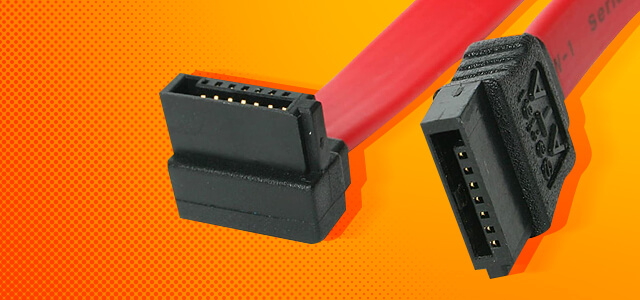
For several years now it seems that SATA drives, particularly SSD’s, have been frozen in place. While they have been getting cheaper, they haven’t been getting faster. Combine that with the rise of PCIe-based NVMe storage getting faster, cheaper, and with higher capacities than ever before, and it’s easy to think that SATA-based storage is on its way out.
Similarly to how optical media has always been held back by the speed at which a disc can rotate, SATA drives have also been held back by two factors: rotation speed and AHCI. Mechanical, spinning hard drives suffer from the same drawback as optical media in that a disc (or metal platter in a hard drive) can only spin so fast or it may shatter. Though these platters can reach higher speeds than a DVD, they still max out at about 15,000 rotations per minute (RPM). The advantage that mechanical drives still have is in the sheer amount of data that they can hold in a single drive, with the highest capacity consumer-grade drives currently sitting at an incredible 16 terabytes. While these super high capacity drives may be pricey, they are still incredibly cheap when compared to an enterprise-grade SSD with a similar capacity, making them appealing for those looking for cheap, plentiful storage. But many hard drive manufacturers still see a strong future for mechanical hard drives, as SeaGate has stated that they plan to have 20 terabyte drives by the end of this year.
Solid state drives are a little bit of a different story. As a standard, SATA has been around for a long time, first arriving all the way back in 2003. Back then, SSD’s were incredibly rare, so SATA and AHCI (Advanced Hardware Configuration Interface) were designed with mechanical storage in mind. This was fine for the first two iterations of SATA, SATA I and SATA II, which ran at speeds of 150 MB/s and 300 MB/s respectively. SATA III was released in 2009 and brought the speeds up to 600 MB/s, and while there have been minor revisions since then for things such as solid state hybrid drives (SSHD) and TRIM, the speed has not gone up in nearly eleven years. In that time PCIe and NVMe storage have begun to take center stage, mainly due to their incredible speeds.
So all of that begs the question: is SATA nearly dead? It’s easy to think that, as companies like Sabrent have recently announced an 8 TB NVMe drive on a single M.2 drive. Not only that, but Apple’s new Macbook Pro 16” also has the option for 8 TB of NVMe storage and completely forgoes any SATA storage. Plus a whole new manufacturing method for NAND memory cells (the “solid state” part of an SSD) has started production, Quad Layer Cell (QLC), promising even faster speeds and denser memory cells for higher capacities.
Perhaps the best way to look at which way the industry is heading is to look at market share. Last year, NAND memory prices steadily fell as production methods were tuned and expanded, and by the end of 2019 PCIe storage was close to 50% market share of all SSD storage. It is worth noting that this does include the enterprise sector, but that is still a good indicator of the direction the industry is heading.
So does that mean that SATA is nearly dead? Perhaps, but rarely does a certain technology have a definitive end point and completely disappears. Despite the industry as a whole moving away from optical media, our own customers still frequently order external USB optical drives for legacy media or backups. We even have customers request FireWire cards fairly often, and those have been considered legacy for at least a decade. SATA will continue to march on for some time, mainly in the form of super high capacity mechanical drives, and perhaps in high capacity, low cost SSD’s, so it will be a long time before we can say that SATA is well and truly dead.
Ryan Batson
Latest posts by Ryan Batson (see all)
- How To Upgrade to Windows 11 - October 6, 2021
- What’s New In Windows 11 - July 6, 2021
- What You Need To Know About Upgrading To Windows 11 - June 30, 2021